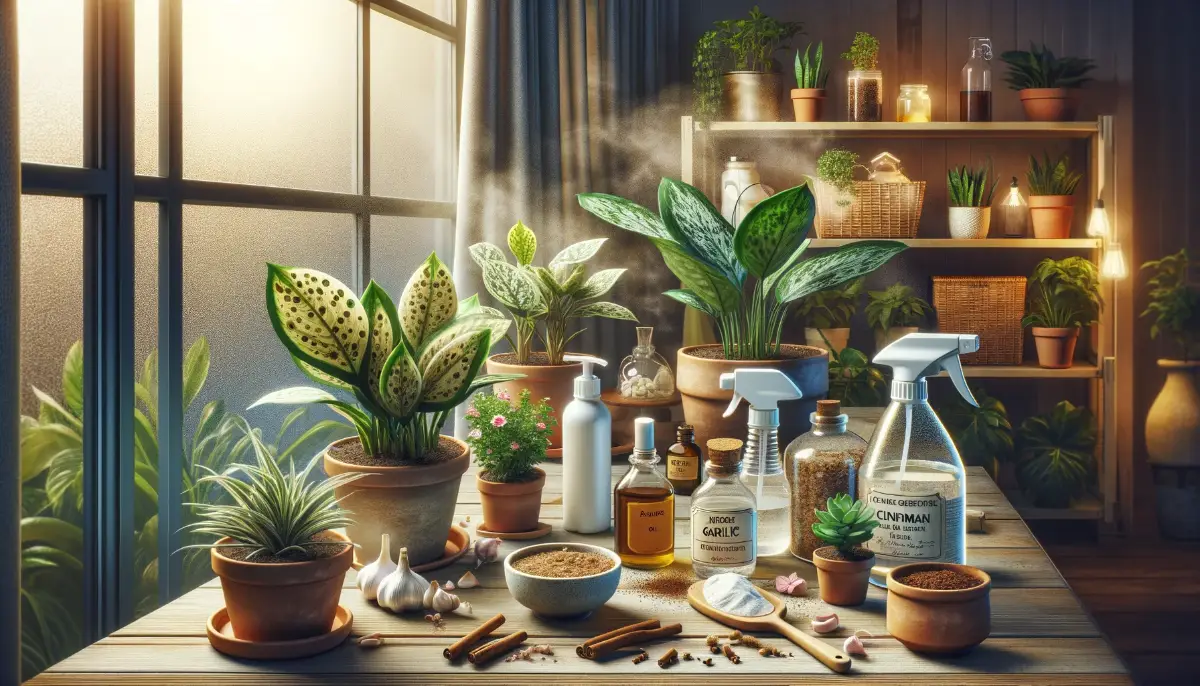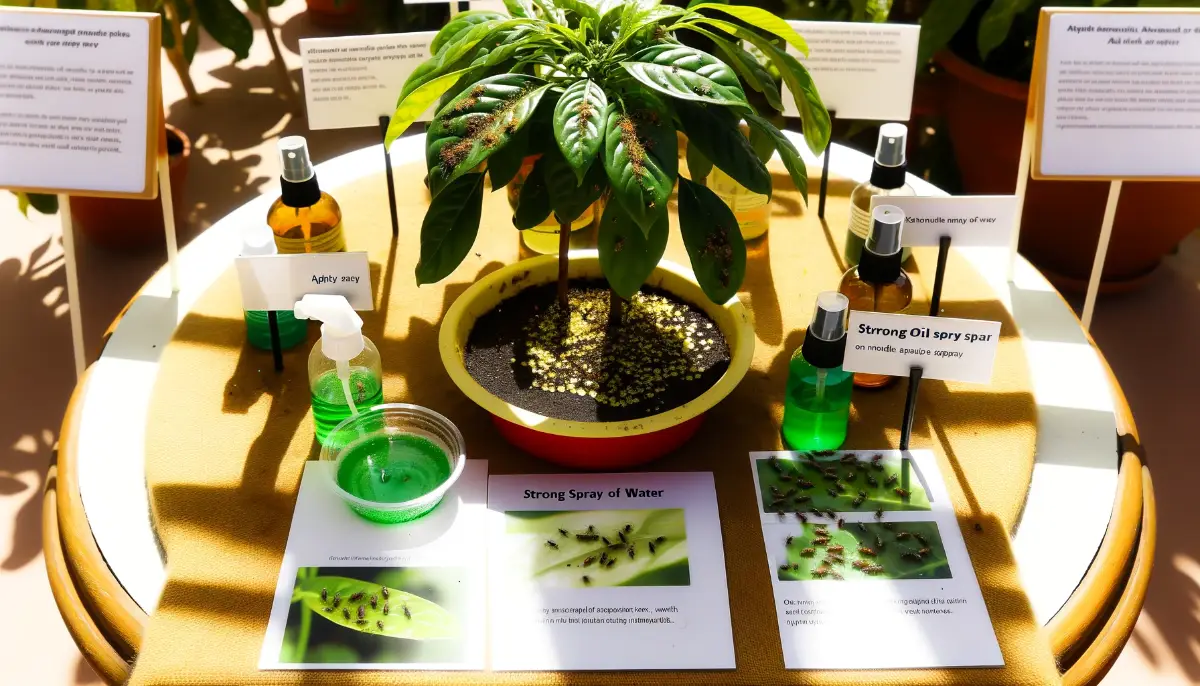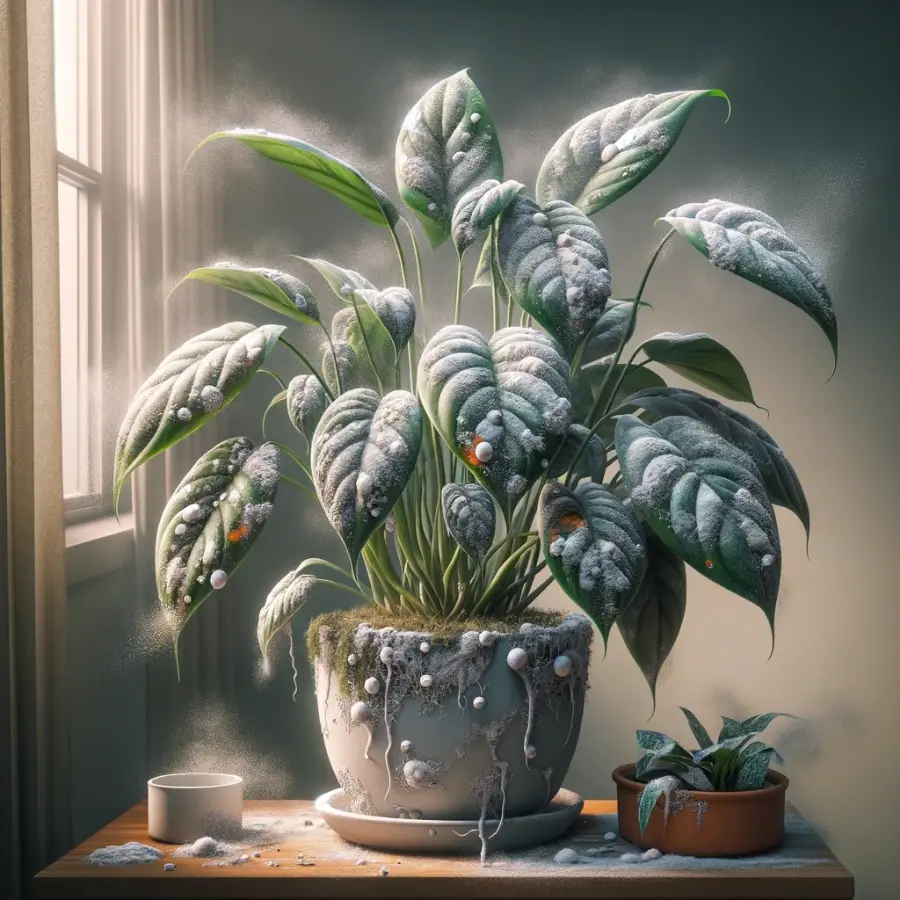Identifying fungal leaf spots in your indoor garden is essential for maintaining the health and beauty of your plants. This common plant affliction can be recognized by a few distinctive symptoms and understanding these can help you take timely action to manage the issue effectively.
Symptoms of Fungal Leaf Spot
- Circular Spots or Lesions: Typically, fungal leaf spots are characterized by tan, reddish-brown, or black circular spots or lesions on the leaves. These spots may vary in size and often have a distinct edge or border.
- Coalescing Spots: As the condition worsens, these spots may grow and merge together, forming larger, irregularly shaped lesions. This can lead to significant damage and may affect the overall health of the plant.
- Leaf Drop and Dieback: In severe cases, fungal leaf spot can cause leaves to drop prematurely and lead to dieback of plant parts. This can significantly impact the aesthetic appeal and vitality of your indoor garden.
- Growth Impact: If the leaf spots target new growth or the growing points at the top of the plant, it can stunt the plant’s growth or even kill the new leaves, affecting the plant’s overall development.
Causes and Conditions Favoring Fungal Leaf Spot
Several environmental conditions and cultural practices can create a conducive environment for the development of fungal leaf spots:
- High Humidity and Poor Air Circulation: Fungi thrive in moist, humid conditions, especially when combined with poor air circulation around plants.
- Overwatering or Improper Watering Practices: Keeping the foliage wet for extended periods or watering late in the day can promote fungal growth.
- Dense Planting: Lack of space between plants reduces air flow and increases humidity around the foliage, creating an ideal environment for fungal diseases.
- Pest Infestations: Pests like aphids and mealybugs can exacerbate fungal issues by secreting honeydew, which can lead to sooty mold and further stress plants.
Treating Fungal Leaf Spots in Indoor Organic Garden
Treating fungal leaf spots in your indoor organic garden doesn’t have to involve harsh chemicals. There are several effective organic remedies you can make at home using common ingredients. Here are some recipes and methods for treating fungal infections organically:
Baking Soda Solution
A basic and effective treatment involves using baking soda. Mix a teaspoon of baking soda with a quart of water and spray it on the affected leaves. This mixture helps eliminate fungal spores.
Boost Your Houseplants with Baking Soda
Organic Milk Spray
Mix one part organic milk with ten parts water to create a fungicide effective against some leaf diseases, including powdery mildew. Spray this mixture generously on afflicted plants.
Garlic Spray
Blend five cloves of garlic with a pint of water, strain to remove any chunks, and then pour the liquid into a spray bottle. Use it once a week to prevent fungus from taking hold.
Neem Oil
Neem oil is a natural fungicide and can be used by mixing it with water and a bit of liquid soap. It’s perfect for treating leaf spot disease organically. Ensure to follow the product’s specific instructions for dilution and application.
Vinegar Fungicide
Mix 1/4 cup of white vinegar with a liter of water in a spray bottle. This simple fungicide is effective for treating several types of fungal diseases on indoor and outdoor plants.
Chamomile Tea
Chamomile tea contains sulfur, which fights against damping off, a type of fungal disease. Soak a chamomile tea bag in cool water for 15 to 20 minutes and mist the solution over seedlings and young plants.
Cornmeal Fungicide
Sprinkle a light layer of cornmeal around plants susceptible to black spot, then cover it with bark mulch. Cornmeal is believed to promote the growth of beneficial fungi that compete with disease-causing fungi.
Cinnamon for Fungal Leaf Spots
Cinnamon has antifungal properties and can be used to fight fungal leaf spots by rubbing it gently over the affected area. Be cautious not to use too much as it can burn the leaves.
Aspirin Spray
Crush an aspirin and dissolve it in water to create a spray that can help prevent fungal diseases. This is particularly useful as a preventative measure, sprayed every couple of weeks throughout the growing season.
Implementing these organic treatments can help manage fungal leaf spots effectively while keeping your indoor garden healthy and chemical-free. Always test a small area of the plant first to ensure there’s no adverse reaction to the treatment.
Preventing fungal leaf spot in indoor garden
Preventing fungal leaf spot in your indoor garden involves adopting practices that reduce the environmental factors conducive to fungal growth. Here are key strategies to help you keep your indoor garden healthy and free from fungal leaf spots:
Ensure Good Air Circulation
Crowded plants with poor air circulation create a humid environment that fungi thrive in. Space out your plants properly to allow for better air flow around and between them.
Water Correctly
Water your plants in a way that keeps the foliage dry. Watering in the morning allows moisture on the leaves to evaporate throughout the day. Avoid overhead watering; instead, water at the base of the plants to minimize wet foliage.
Maintain Cleanliness
Remove and destroy fallen leaves and debris around your plants. Fallen debris can harbor fungal spores that may reinfect plants. Keeping the area clean can significantly reduce the risk of fungal infections.
Use Mulch Wisely
Covering the soil with mulch helps maintain soil moisture levels and creates a barrier that prevents disease pathogens from splashing back onto the plants. Ensure the mulch layer is about 2 to 3 inches thick for it to be effective.
Regular Pruning
Prune your plants to remove heavily affected leaves and to improve air circulation. This not only makes your plants look better but also reduces the humidity around the foliage, which is less inviting for fungi.
Select Resistant Varieties
Whenever possible, choose plant varieties that are resistant to fungal diseases. This can greatly reduce the prevalence of fungal issues in your indoor garden.
Monitor Plant Health
Regularly check your plants for early signs of disease. Early detection can make treatment more effective and prevent the spread to other plants.
Optimize Environmental Conditions
Adjust the environmental conditions to make them less favorable for fungal growth. This includes controlling humidity levels within your growing area and ensuring there is plenty of light.
Natural Preventive Sprays
Consider using natural fungicides as preventive measures. Solutions like neem oil, baking soda sprays, or diluted vinegar can be sprayed periodically on plants to prevent fungal diseases.
FAQs about Fungal Leaf Spot in Indoor Organic Gardens
What causes fungal leaf spot in indoor plants?
Fungal leaf spots are caused by various fungi that thrive in moist, humid conditions. Poor air circulation, overcrowding, and wet foliage can create an ideal environment for these fungi.
How can I identify fungal leaf spots on my plants?
Fungal leaf spots typically appear as tan, reddish-brown, or black circular spots or lesions on the leaves. These spots may grow and merge, forming larger areas of damage.
Are there any organic remedies for treating fungal leaf spots?
Yes, baking soda solution, neem oil, garlic spray, and diluted vinegar are effective organic remedies. These solutions can be sprayed directly on affected plants to combat fungal spores.
Can fungal leaf spots spread to other plants?
Yes, fungal leaf spots can spread to other plants, especially if the environmental conditions favor fungal growth. It’s important to isolate affected plants and treat them promptly.
How can I prevent fungal leaf spots in my indoor garden?
Preventing fungal leaf spot involves ensuring good air circulation, watering correctly to avoid wet foliage, keeping the garden area clean, and using mulch wisely.
Is it necessary to remove affected leaves?
Yes, removing and destroying heavily affected leaves can help prevent the spread of the fungus to healthy parts of the plant and other plants.
How often should I apply organic fungicides as a preventive measure?
Natural fungicides like neem oil or baking soda solution can be applied every two weeks or so as a preventive measure, but always test a small area first to ensure no adverse effects.
Can I use commercial fungicides in an organic garden?
While there are commercial fungicides available, for an indoor organic garden, it’s best to use products that are certified organic or natural remedies to stay true to organic gardening principles.
What should I do if organic remedies don’t work?
If organic remedies don’t resolve the issue, ensure that you’re accurately diagnosing the problem as a fungal leaf spot. Adjust environmental conditions further to make them less conducive to fungal growth. Consulting with a local extension service or a plant pathology expert can also provide specific advice.
Can improving air circulation really help prevent fungal diseases?
Yes, improving air circulation helps reduce humidity and moisture on plant leaves, which are key factors that fungi need to thrive. Spacing plants properly and using fans can improve air circulation in your indoor garden.









